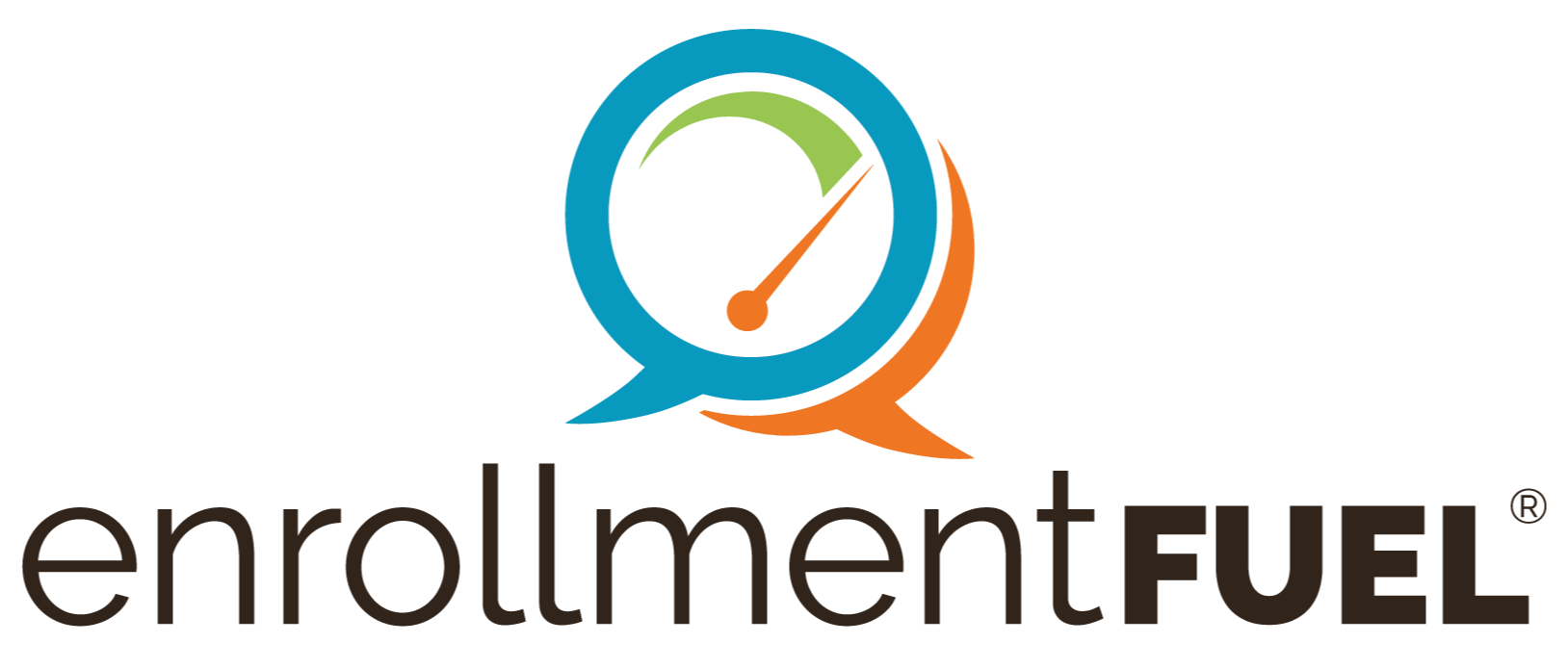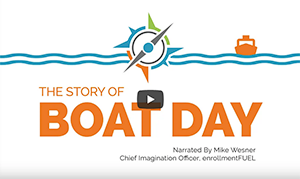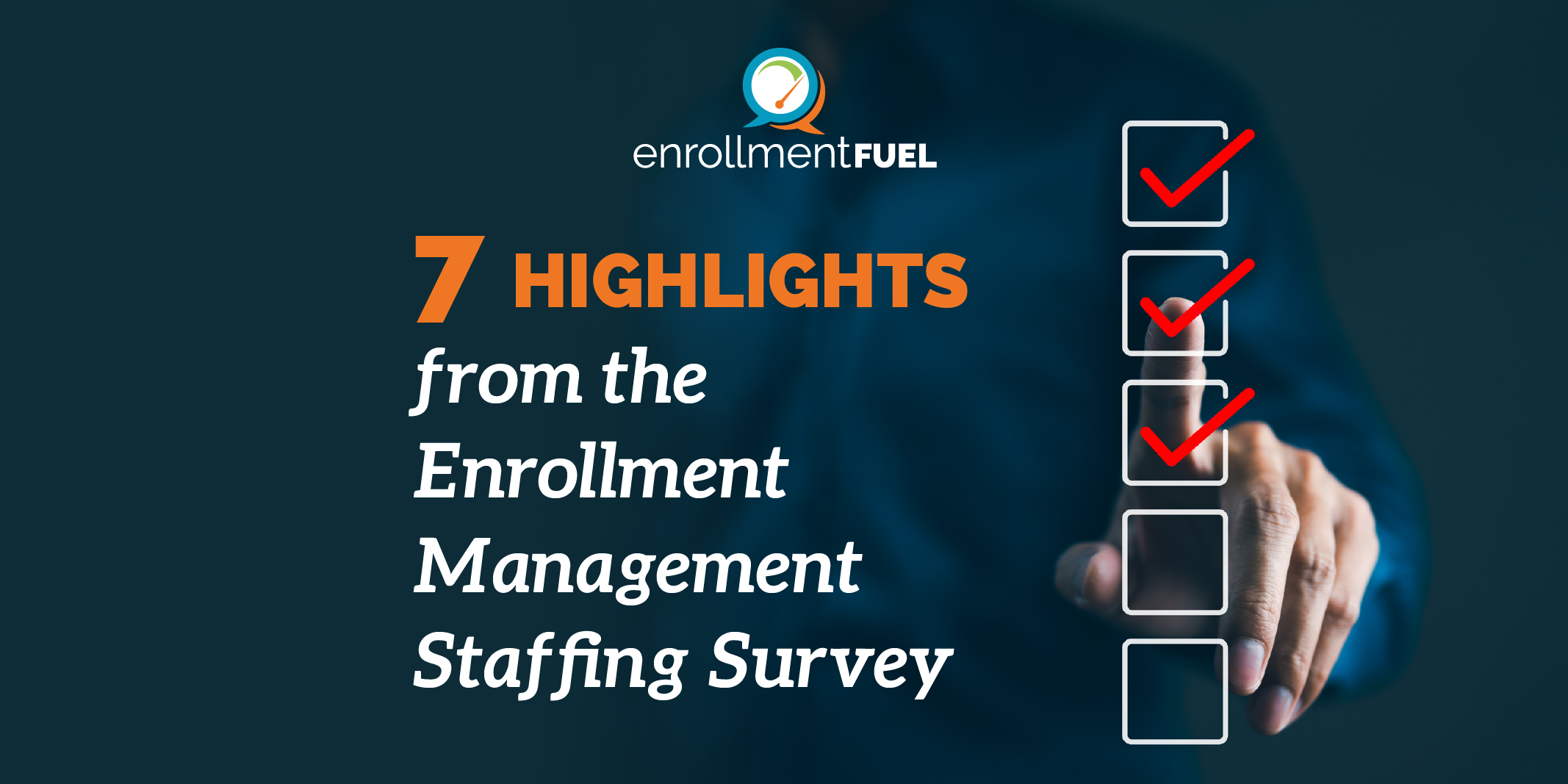I recently overheard the following during an industry conference roundtable session on yield strategies: “We make sure to really over-communicate with students and their families to get our messages to them. So, we send them all the emails. All the time. Constant outreach. Until, you know, they respond.”
This has been a long-standing school of thought within admissions professionals: a student who has not responded to a single email today can still be tomorrow’s enrolled student, if only we keep sending them emails until one resonates with them.
That way of thinking, however, can be challenging and even detrimental to your recruitment efforts. Let’s dive into some reasons why you should be even more careful with this strategy this recruitment cycle and onward.
EMAIL MARKETING HAS CHANGED—IT'S TIME YOUR STRATEGY DOES, TOO.
keepiNG a close eye on kpiS
Email-dominant communication flows are experiencing a drastic downturn in efficacy. We know email continues to be an essential part of recruitment efforts, and that it is not going anywhere for now. Yet, as you continue to use bulk email communications in the aftermath of the spam and deliverability changes email giants Gmail and Yahoo! introduced over the past two years, it’s imperative that you monitor your overall spam rate daily. Especially when non-responder messaging is a major part of your strategy.
When you email recipients who consistently do not interact with your content, you increase the risk that they will mark the messages as spam. As they do so, mail platforms calculate an overall spam rate for all of your communications, and if that spam rate score maintains 0.3% or higher (that’s three students in 1,000 marking your email as spam), then your email deliverability will be affected.
The spam rate could additionally impact your domain reputation. If your overall domain reputation drops to “Low” or even “Bad,” all content coming out of that domain will be redirected straight into spam folders for all recipients.
In other words, continuously peppering non-responders on top of the funnel with emails could hurt your ability to reach out to students much deeper in the funnel who do want to hear from you, but their inbox has rejected your messages.
How do you remedy that? Focus your consistent email communications lower in the funnel when the messages are meaningful to their recipients. A student who has gone through the application process with you is far more likely to be interested in what you are telling them than a student who has received 25 emails from you already but has not responded to a single one.
students want fewer emails. period.
Year over year, students want to receive less and less weekly emails. This year, only 39% of Class of 2025 said weekly outreach is acceptable, down from 81% just three years ago. Not only that, but many students openly share on platforms like Reddit how overwhelmed they feel by receiving too many emails..
Our team stays up to date on conversations in the “Applying To College” subreddit, and we would strongly recommend you do as well. For instance, a series of related threads discussing the high number of college emails received by specific individuals shows a drastic jump in email volume over the past few years.
While one student six years ago shared “a brief analysis of 2,374 college emails” they had received, and another posted an analysis of 3,069 emails sent to them by colleges two years later, the most recent addition to the series boasts data from one Class of 2024 user who received over 13,300 college emails.
The stats and commentary gathered by these entrepreneurial, college-bound students and their commenters are genuinely illuminating:
- On average, the three posters received between 17 and 24 emails per college before the point of application.
- Some colleges (no naming names here!) went as far as sending nearly 340 emails to a single recipient.
- Frequently-used subject lines all announced fee-waivers, deadline extensions, and priority or custom applications. None of them seemed popular with the readers.
- “Is this you, [Student Name]?” and similar subject lines did not go well with that crowd either, and neither did anything marked as “Urgent!”, “Priority”, or “You’ve been selected”
- Shoutouts to “weirdest subject lines” went too out-of-the box with clickbait style subject lines. Examples included “GIANT ANTS! AAAHH!!!!” or “Find your baby crocodile, [Student Name]”. Others deserving (dis)honorable mentions were ones the students deemed sounding like “a creepy pickup line” (“You’ve got our attention, [Student Name]” or “Weekend plans?”).
Please note, none of these students, or anyone involved in the threads, said they did not want to receive any emails. But if one thing stood out, it was that the colleges with the highest number of email counts seemed to achieve the opposite effect: decreased interaction with their intended audience. A few commenters even pointed out that they no longer considered a college because of the overwhelming number of communications that soured their experience.
ELECTION WOES ARE NOT JUST FOR DIGITAL MARKETING
Election years pose additional unique challenges to marketing efforts. The U.S. election season has a substantial effect on marketing across all industries. While past election cycles have traditionally had a negative impact due to increase in noise on all channels, a close election may bring the volume up to record levels (experts predicted upwards of $16 billion spent on communication efforts from both parties in 2024). In turn, this will lead to content exhaustion and recipients tuning out any messages they are exposed to.
By mid-September, the cost of paid social media advertising and search campaigns across industries may rise anywhere from 15 to 50%, while performance will go down about 2 to 3% per week in the final six weeks before the election. Email marketing will not be spared, either: email newsletter CTRs in the past have dropped as much as 25% in the month before a general election.
In other words, do not expect this fall’s communication efforts on any channels to yield wildly successful results, regardless of your investment in them. If anything, a return to personalized outreach such as phone calls and texts, as well as meeting students and families on the road, might be the most effective way to build a relationship with them.
OVER-EMAILED & OVERWHELMED
There is hardly an organization that does not communicate with us via email: from work and schools, to doctor’s offices, businesses, our preferred social media sites, the post office, or that one influencer you interacted with that one time who now cheerfully sends you their weekly newsletter. (Or is that just me?) Bottom line, we are already bombarded by email notifications before we even look at marketing emails. There are 361.6 billion emails sent worldwide every single day. And while 88% of people check their emails daily, 38.5% of them engage with the emails they receive for less than eight seconds—during that brief time they determine whether they will delete, ignore, respond to, or mark the interaction as spam. If the recipient is a top-of-the-funnel student, their action in these eight seconds could affect your overall communication flow for the entire cycle.
WHERE TO GO FROM HERE
While we are not telling you to break up with email for good, we would definitely recommend you ponder a few tips as you go into the next cycle.
- Don’t put all of your messaging eggs into the email basket, especially with prospect communications. Diversify your channels as much as possible by adding digital ads (display and social media or Google Pay-Per-Click ads, which have proven themselves in recent years) and be sure you’re creating quality, organic content on your social media channels and website.
- Be like Elsa, and let them go: Monitor your email communications and promptly remove ANY non-responders or recipients who have marked your messages as spam. Ensure you have a weekly check-in with whoever is monitoring your domain reputation and overall spam rates.
- Stay relevant in your messages to students and families. Do your research and create/update your communication flows to reflect recent trends. Audit your communication flows on an annual basis to ensure you have the right mix of channels and content. If you are not sure where to start on that, we have a course that can help.
The key to avoiding the pitfalls of email exhaustion is intentionality.
As I think back on the example in the beginning, to the college determined to send “all the emails, all the time, constant outreach,” it is clear that this strategy was born not out of prior successes, but from lack of resources and bandwidth. However, as we saw above, there is a point of saturation and diminishing return, and you should consider that carefully while building your communications.
Find a way to utilize email as a part of an overall strategy, not make it the entire strategy. Otherwise, this popular and common tool may turn out to be more costly than useful.
About the Author
Milena Velez has over 16 years of enrollment management experience with diverse student populations. A former international student, she started her career in 2007 as Coordinator of International Recruitment and has held various roles, including Director of Admission at Newberry College. She specializes in creating enrollment communication strategies and improving institutional processes.
Milena earned her bachelor's from Oberlin College, an MBA from Lake Erie College, and a Master of Arts in Rhetoric and Writing from the University of Findlay. Originally from Bulgaria, she now lives in South Carolina with her husband, Joel, their daughter, Stella, and their dog, Luna. In her free time, she enjoys writing, running, and relaxing with a good book and a cup of tea.
Related Articles
Email Requirement Changes | Higher Ed | enrollmentFUEL
To rephrase Mark Twain, the reports of email's death have been greatly exaggerated—for now. It...
DON’T AVOID THE SUBJECT: SPAM WORDS COULD SABOTAGE YOUR EMAIL EFFORTS
It’s the end of the summer. Students will return to campus soon, and the new class you have worked...
Adult & Grad Student Search | Higher Ed | enrollmentFUEL
Anyone working in the realm of Adult and Graduate recruitment knows that their biggest challenge is




